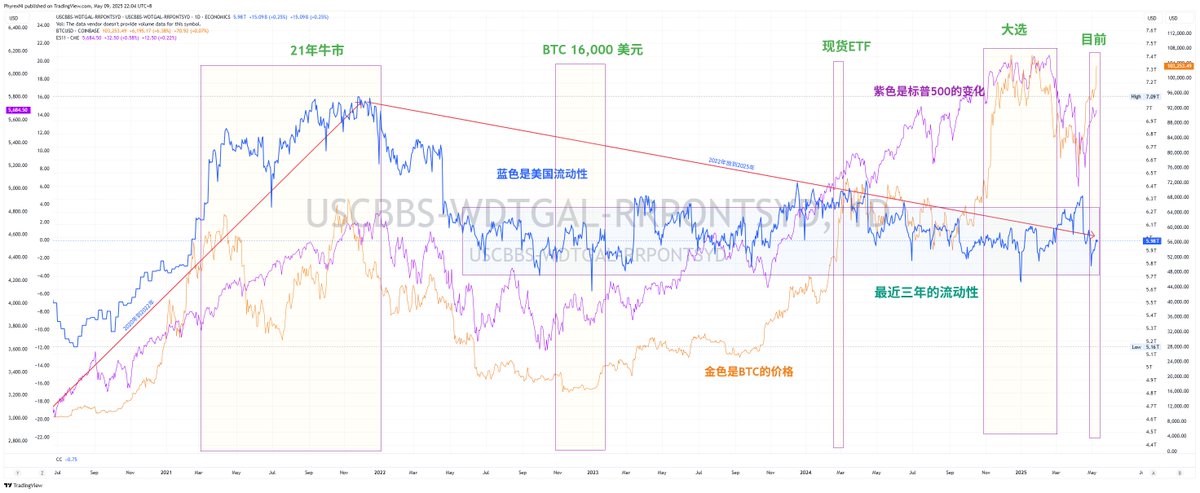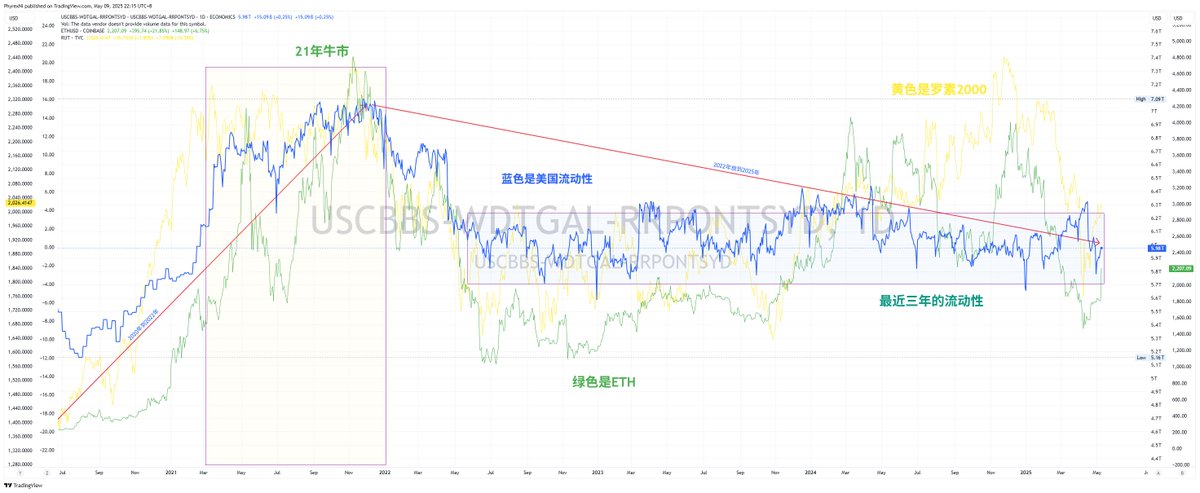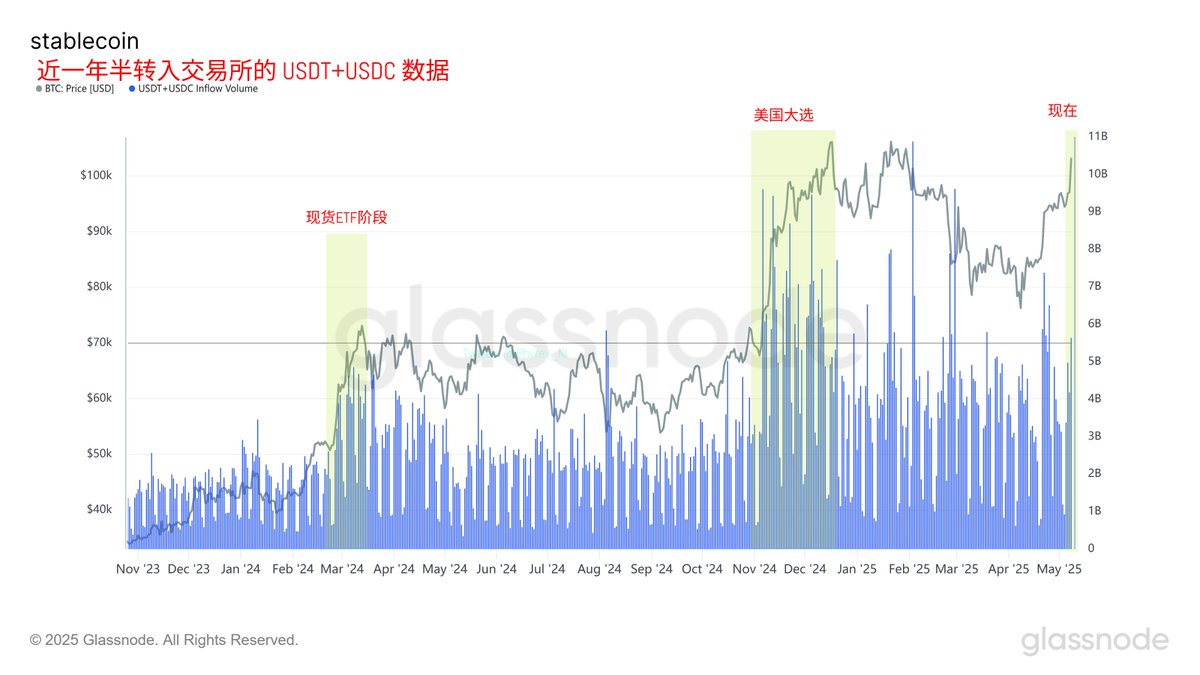The question from Wu Xiong is quite good. Recently, I've also been looking into liquidity-related content. According to traditional liquidity data, not only now but even when $BTC dropped to $16,000 in 2022, the overall liquidity in the U.S. didn't change much. It can be seen that it remained within a fluctuating range without any significant breakthroughs. Especially recently, when Bitcoin returned to $100,000, liquidity actually decreased.
So, I marked a few time points. In 2021, liquidity increased, which drove the synchronous rise of BTC and the S&P 500. By February 2024, the rise of BTC was mainly due to ETFs. Although liquidity didn't change much during this period, traditional funds indeed started buying ETFs, which is equivalent to buying BTC, effectively bringing "targeted liquidity."
Starting from November 2024, it will be during the U.S. election period, where Trump has driven the sentiment for BTC to rise. Currently, comparing the U.S. stock market and BTC, although the direction has remained consistent, BTC has clearly risen more significantly. It has already recovered almost all the declines since the tariffs, while the U.S. stock market has not yet returned to the levels of February 25.
To say a bit more about the U.S. stock market, looking at the S&P or Nasdaq alone, the rise is indeed good. However, the mainstream funds during this cycle are mainly in the "Seven Sisters," which has little relation to other sectors. From the data of the Russell 2000 and $ETH, the suppression of liquidity is quite evident. Several significant rises are related to events. Although this time the rise of ETH is considerable, it can be clearly seen that the Russell 2000 has been the strongest in rising among U.S. stock indices.
This should not be directly related to liquidity; it should be the market's expectation of sector rotation. The last time this happened was at the end of 2024. It did occur, but because there was indeed no external liquidity, or rather, the U.S. did not enter monetary easing, liquidity did not strengthen.
Therefore, I believe it is confidence that has led to enhanced purchasing power. Interestingly, the increase in market funds is not very strong. It feels more like a repeat of February 2024, where investors were not optimistic about the spot ETF at that time, thinking it was all "Sell the news," and that the good news had turned into bad news. So many people were shorting or waiting for prices to drop.
What happened? There was no drop at all; it shot up directly from $46,000 to $73,000. The rapid rise left many people missing out, reducing selling pressure while not using much capital, but the price still went up. Currently, the amount of capital driving the rise is even less than before, indicating that more investors missed this wave.
It is during high-stakes periods like the U.S. election that a large amount of capital appears, allowing many investors to get on board.
This post is sponsored by @ApeXProtocolCN | Dex With ApeX



免责声明:本文章仅代表作者个人观点,不代表本平台的立场和观点。本文章仅供信息分享,不构成对任何人的任何投资建议。用户与作者之间的任何争议,与本平台无关。如网页中刊载的文章或图片涉及侵权,请提供相关的权利证明和身份证明发送邮件到support@aicoin.com,本平台相关工作人员将会进行核查。




